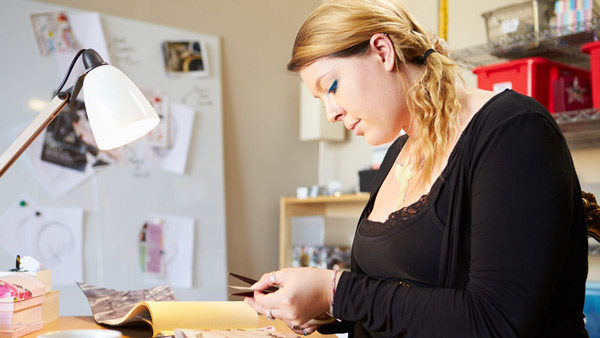Let’s say you’re looking to change things up in your kitchen but don’t know where to begin? or maybe you’re not sure how to communicate your ideas to a contractor. Finding your own style isn’t all that hard and you can create a style board o that Well you’re in luck, we’ll be discussing how to find your own personal style for your kitchen, but this process can be used for virtually any.
Start collecting inspiration
 When you’re first starting out we suggest collecting anything and everything that catches your eye. Whether digitally, physically or a combination of the two, add freely to this collection- don’t think about it. Editing happens later, right now we are building a collection of elements that call to you. Some of these images may not end up being used at all and that’s fine. By collecting different images and ideas without editing yourself, you’ll end up finding a pattern or common thread that you naturally gravitate to.
When you’re first starting out we suggest collecting anything and everything that catches your eye. Whether digitally, physically or a combination of the two, add freely to this collection- don’t think about it. Editing happens later, right now we are building a collection of elements that call to you. Some of these images may not end up being used at all and that’s fine. By collecting different images and ideas without editing yourself, you’ll end up finding a pattern or common thread that you naturally gravitate to.
Categorize
Now that you have a collection of inspiration for your kitchen it’s time to start breaking these images down into categories. The categories that you chose to use are up to you and your collection. A few example categories could be – “Kitchen Islands”, “Back Splashes”, “Lighting” and “Color Palettes”. Again, don’t edit yourself in this stage, that comes next.
Refine your collection
In the beginning of this process your collection of inspirational images consisted of anything and everything that caught your eye. Now it’s time to go through and look at everything you’ve saved. Some images may have lost their appeal to you, and that’s fine, put these images aside and keep going.
Define your collection
Once your collection has been edited down it’s time to look at the images and define what elements of the photo that you like, and anything t hat you might not like. For example “I really like the shape of these tiles used in this backsplash” or “I like the style of the cabinet doors, but I would prefer to see it in a different finish”. Write down your thoughts as you go through the images and hold onto it for the next step.
hat you might not like. For example “I really like the shape of these tiles used in this backsplash” or “I like the style of the cabinet doors, but I would prefer to see it in a different finish”. Write down your thoughts as you go through the images and hold onto it for the next step.
Bring it to your contractor
Take your curated collection of images and your notes on the specifics of what you like to your contractor. With a clearly defined picture of what you want, communicating your vision with your contractor should be a breeze.
 The framing that is used to separate and hold pieces of glass within a window is called a “muntin”, sometimes called “muntin bars”, “sash bars”, or “glazing bars”. Typically muntins are made of wood or metal. Historically muntins were used because it was less expensive to use smaller pieces of glass, rather than a large single pane of glass.
The framing that is used to separate and hold pieces of glass within a window is called a “muntin”, sometimes called “muntin bars”, “sash bars”, or “glazing bars”. Typically muntins are made of wood or metal. Historically muntins were used because it was less expensive to use smaller pieces of glass, rather than a large single pane of glass.



 Do – Know how big the houseplant is going to get.
Do – Know how big the houseplant is going to get. Don’t – Feel bad if your first attempts at keeping a houseplant don’t go well
Don’t – Feel bad if your first attempts at keeping a houseplant don’t go well


 When you’re first starting out we suggest collecting anything and everything that catches your eye. Whether digitally, physically or a combination of the two, add freely to this collection- don’t think about it. Editing happens later, right now we are building a collection of elements that call to you. Some of these images may not end up being used at all and that’s fine. By collecting different images and ideas without editing yourself, you’ll end up finding a pattern or common thread that you naturally gravitate to.
When you’re first starting out we suggest collecting anything and everything that catches your eye. Whether digitally, physically or a combination of the two, add freely to this collection- don’t think about it. Editing happens later, right now we are building a collection of elements that call to you. Some of these images may not end up being used at all and that’s fine. By collecting different images and ideas without editing yourself, you’ll end up finding a pattern or common thread that you naturally gravitate to. hat you might not like. For example “I really like the shape of these tiles used in this backsplash” or “I like the style of the cabinet doors, but I would prefer to see it in a different finish”. Write down your thoughts as you go through the images and hold onto it for the next step.
hat you might not like. For example “I really like the shape of these tiles used in this backsplash” or “I like the style of the cabinet doors, but I would prefer to see it in a different finish”. Write down your thoughts as you go through the images and hold onto it for the next step.

 The Danes used the word “hygge” to describe a feeling or mood that comes from taking pleasure in everyday moments. Hygge can be described as creating an intimate, cozy, and relaxed environment where you can take time to savor the smallest special moments.
The Danes used the word “hygge” to describe a feeling or mood that comes from taking pleasure in everyday moments. Hygge can be described as creating an intimate, cozy, and relaxed environment where you can take time to savor the smallest special moments.









 Every year there are forecasts made as to what color palettes will be most popular in the year to come. These predictions are made by numerous institutions and style agencies, the Pantone Color Institute and Dulux are the two most prominent and well known of these institutions.
Every year there are forecasts made as to what color palettes will be most popular in the year to come. These predictions are made by numerous institutions and style agencies, the Pantone Color Institute and Dulux are the two most prominent and well known of these institutions.